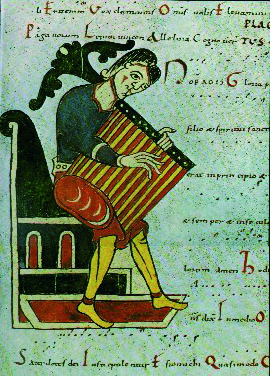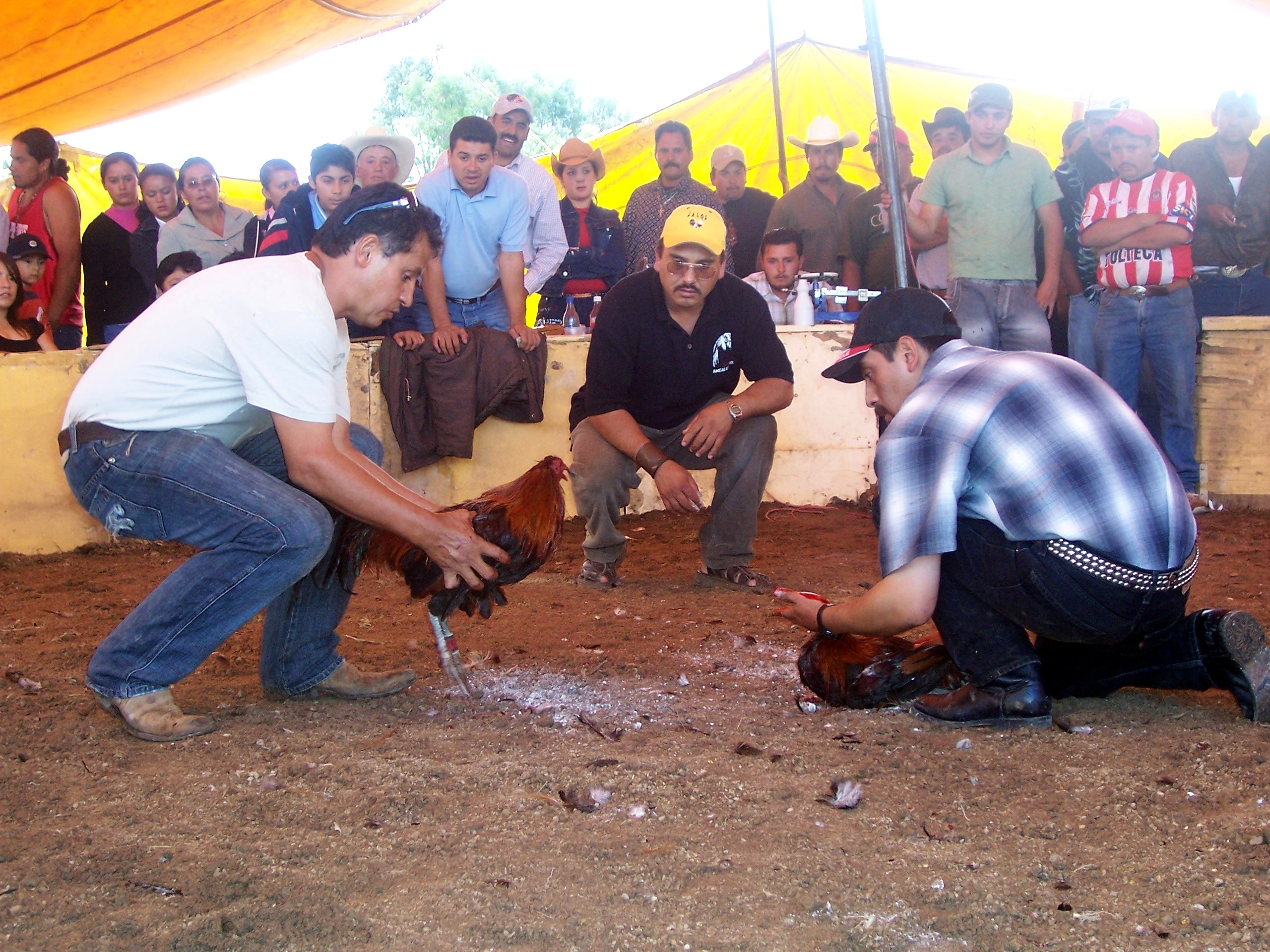|
Court Of Minstrels
The Court of Minstrels was a court held in Tutbury, Staffordshire, for minstrels (travelling musicians) from the nearby counties. The court was founded by John of Gaunt, the Duke of Lancaster, who held Tutbury Castle, for the encouragement of the minstrels' art and for their better regulation. A King of the Minstrels governed the court and juries of minstrels adjudicated in disputes and complaints. The court met annually at Tutbury on the Assumption of Mary, 15 August, and the following day held entertainments including the Tutbury bull run. The court was ordered to cease in 1778 but seems to have continued into the early 19th century. Foundation In the 14th century music was an important form of entertainment and minstrels, travelling musicians, occupied a position of some status. Minstrels had visited Tutbury on the 15 August for the fair marking the feast day of the assumption of Mary, patron of Tutbury Priory, since at least 1314. John of Gaunt, who then held Tutbury ... [...More Info...] [...Related Items...] OR: [Wikipedia] [Google] [Baidu] |
Guild
A guild ( ) is an association of artisans and merchants who oversee the practice of their craft/trade in a particular area. The earliest types of guild formed as organizations of tradesmen belonging to a professional association. They sometimes depended on grants of letters patent from a monarch or other ruler to enforce the flow of trade to their self-employed members, and to retain ownership of tools and the supply of materials, but were mostly regulated by the city government. A lasting legacy of traditional guilds are the guildhalls constructed and used as guild meeting-places. Guild members found guilty of cheating the public would be fined or banned from the guild. Typically the key "privilege" was that only guild members were allowed to sell their goods or practice their skill within the city. There might be controls on minimum or maximum prices, hours of trading, numbers of apprentices, and many other things. These rules reduced free competition, but sometimes mainta ... [...More Info...] [...Related Items...] OR: [Wikipedia] [Google] [Baidu] |
Medieval Performers
In the history of Europe, the Middle Ages or medieval period lasted approximately from the late 5th to the late 15th centuries, similar to the post-classical period of global history. It began with the fall of the Western Roman Empire and transitioned into the Renaissance and the Age of Discovery. The Middle Ages is the middle period of the three traditional divisions of Western history: classical antiquity, the medieval period, and the modern period. The medieval period is itself subdivided into the Early, High, and Late Middle Ages. Population decline, counterurbanisation, the collapse of centralized authority, invasions, and mass migrations of tribes, which had begun in late antiquity, continued into the Early Middle Ages. The large-scale movements of the Migration Period, including various Germanic peoples, formed new kingdoms in what remained of the Western Roman Empire. In the 7th century, North Africa and the Middle East—most recently part of the Eastern Roman ... [...More Info...] [...Related Items...] OR: [Wikipedia] [Google] [Baidu] |
William Cavendish, 5th Duke Of Devonshire
William Cavendish, 5th Duke of Devonshire, (14 December 1748 – 29 July 1811), was a British nobleman, aristocrat, and politician. He was the eldest son of William Cavendish, 4th Duke of Devonshire, by his wife, the heiress Lady Charlotte Boyle, ''suo jure'' Baroness Clifford, who brought in considerable money and estates to the Cavendish family. He was invited to join the Cabinet on three occasions, but declined each offer.Michael Durban, 'Cavendish, William, fifth duke of Devonshire (1748–1811)’, Oxford Dictionary of National Biography, Oxford University Press, 200accessed 30 April 2010/ref> He was Lord High Treasurer of Ireland and Governor of Cork, and Lord Lieutenant of Derbyshire. In 1782, he was made a Knight of the Order of the Garter. The 5th Duke is best known for his first wife Georgiana, Duchess of Devonshire. At the age of about twenty, Devonshire toured Italy with William Fitzherbert which is where they commissioned the pair of portraits by Pompeo Batoni. [...More Info...] [...Related Items...] OR: [Wikipedia] [Google] [Baidu] |
Duke Of Devonshire
Duke of Devonshire is a title in the Peerage of England held by members of the Cavendish family. This (now the senior) branch of the Cavendish family has been one of the wealthiest British aristocratic families since the 16th century and has been rivalled in political influence perhaps only by the Marquesses of Salisbury and the Earls of Derby. History Although the Cavendish family estates are centred in Derbyshire, they hold the titles of "Duke of Devonshire" and their subsidiary title of earldom of Devonshire (neither peerage is related to the ancient title of Earl of Devon). The first Earl may have chosen "Devonshire" simply because places and lands he was associated with were already attached to existing peerages at the College of Arms. The title remains associated with "Devonshire" even though in modern usage it is the county of Devon. Another reason for the choice of a non-local or regional name was to avoid antagonising the powerful Stanley family from the Midlands wh ... [...More Info...] [...Related Items...] OR: [Wikipedia] [Google] [Baidu] |
Blood Sport
A blood sport or bloodsport is a category of sport or entertainment that involves wikt:bloodshed, bloodshed. Common examples of the former include combat sports such as cockfighting and dog fighting, and some forms of hunting and fishing. Activities characterized as blood sports, but involving only human participants, include the Ancient Rome, Ancient Roman gladiatorial games. Etymology According to Tanner Carson, the earliest use of the term is in reference to mounted hunting, where the quarry would be actively chased, as in fox hunting or hare coursing. Before firearms a hunter using arrows or a spear might also wound an animal, which would then be chased and perhaps killed at close range, as in Medieval hunting, medieval boar hunting. The term was popularised by author Henry Stephens Salt. Later, the term seems to have been applied to various kinds of Baiting (blood sport), baiting and forced combat: bull-baiting, bear-baiting, cockfighting, and later developments such a ... [...More Info...] [...Related Items...] OR: [Wikipedia] [Google] [Baidu] |
Wand Of Office
A wand is a thin, light-weight rod that is held with one hand, and is traditionally made of wood, but may also be made of other materials, such as metal or plastic. Long versions of wands are often styled in forms of staves or sceptres, which could have large ornamentation on the top. In modern times, wands are usually associated with stage magic or supernatural magic, but there have been other uses, all stemming from the original meaning as a synonym of rod and virge. A stick that is used for reaching, pointing, drawing in the dirt, and directing other people, is one of the earliest and simplest of tools. History It is possible that wands were used by pre-historic peoples. It is mentioned that 'rods' (as well as rings) were found with Red Lady of Paviland in Britain. It is mentioned by the author in ''Gower - A Guide to Ancient and Historic Monuments on the Gower Peninsula'' that these might have been wands and are depicted as such in a reconstruction drawing of the burial of ... [...More Info...] [...Related Items...] OR: [Wikipedia] [Google] [Baidu] |
Needwood Forest
Needwood Forest was a large area of ancient woodland in Staffordshire, England, which was largely lost at the end of the 18th century. History The forest was on extensive lands owned by the Berkeley family of Berkeley Castle in Gloucestershire. The forest was home to extensive stocks of wild boar and fallow deer. In the 13th century, Thomas de Berkeley was assigned to be the keeper of the Tutbury ward, and while resident at Tutbury Castle liked to hunt the forest. He had a hunting lodge built, Byrkley Lodge. In 1267, Thomas married the daughter of William de Ferrers, the Earl of Derby. During the rebellion of Simon de Montford against King Henry III, the de Ferrers family allied themselves with the rebellion. After the rebellion was put down, the de Ferrers were forced to forfeit their estates to the crown. Henry III gave the forest to his son Edmund Crouchback, 1st Earl of Lancaster, in 1266. His son Thomas, 2nd Earl of Lancaster died childless in 1322, and thus the ... [...More Info...] [...Related Items...] OR: [Wikipedia] [Google] [Baidu] |
Tutbury Priory
Tutbury Priory was a Benedictine monastery in Tutbury, Staffordshire, England, founded in 1080 by Henry de Ferrers as a dependency of the abbey of Saint-Pierre-sur-Dives in Normandy and completed in 1089, in memory of King William the Conqueror and his wife Queen Matilda of Flanders, also of Henry de Ferrers' own parents, and in thanksgiving for his own family: "in honour of holy Mary, the Mother of God ... and for the soul of King William and Queen Mathilda, and for the health of my father and mother, and my wife Berta, and my sons, Engenulph, William and Robert, and my daughters and all my ancestors and friends." William de Ferrers, 3rd Earl of Derby, William, Earl of Derby, had the body of his great-grandfather, the founder of Tutbury, translated and buried on the south side of the high altar of the priory church. By an unusual set of administrative errors and procedures Tutbury avoided the confiscation of alien priories in 1414 without undergoing formal denization and continue ... [...More Info...] [...Related Items...] OR: [Wikipedia] [Google] [Baidu] |
St Mary's Church, Tutbury
St Mary's Church, Tutbury, is a Grade I listed parish church in the Church of England in Tutbury, Staffordshire. History The West front of the church, the oldest surviving part of the building, is dated from around 1160 - 1170. For centuries the church was used by the monks of Tutbury Priory, as well as the being the parish church of Tutbury. However, the monastery appears to have been founded slightly later than the church. Most of the nave was rebuilt in the 13th century. At the Reformation the eastern part of the church, which served the monastic community, was demolished along with the priory buildings. The South tower appears to be a 16th-century addition. The north aisle is an addition of 1820-2 by Joseph B H Bennett. The chancel and sanctuary were replaced in 1866 by George Edmund Street funded by Sir Oswald Mosley (4th baronet and grandfather of the fascist politician). Memorials Indoors, the church has a memorial to George Robinson (d. 1837) by Joseph Hall of Derby. ... [...More Info...] [...Related Items...] OR: [Wikipedia] [Google] [Baidu] |
Manor Of Tutbury
Manor may refer to: Land ownership *Manorialism or "manor system", the method of land ownership (or "tenure") in parts of medieval Europe, notably England *Lord of the manor, the owner of an agreed area of land (or "manor") under manorialism *Manor house, the main residence of the lord of the manor *Estate (land), the land (and buildings) that belong to large house, synonymous with the modern understanding of a manor. *Manor (in Colonial America), a form of tenure restricted to certain Proprietary colonies *Manor (in 17th-century Canada), the land tenure unit under the Seigneurial system of New France Places * Manor railway station, a former railway station in Victoria, Australia * Manor, Saskatchewan, Canada * Manor, India, a census town in Palghar District, Maharashtra * The Manor, a luxury neighborhood in Western Hanoi, Vietnam United Kingdom * Manor (Sefton ward), a municipal borough of Sefton ward, Merseyside, England * Manor, Scottish Borders, a parish in Peeblesshire, S ... [...More Info...] [...Related Items...] OR: [Wikipedia] [Google] [Baidu] |




